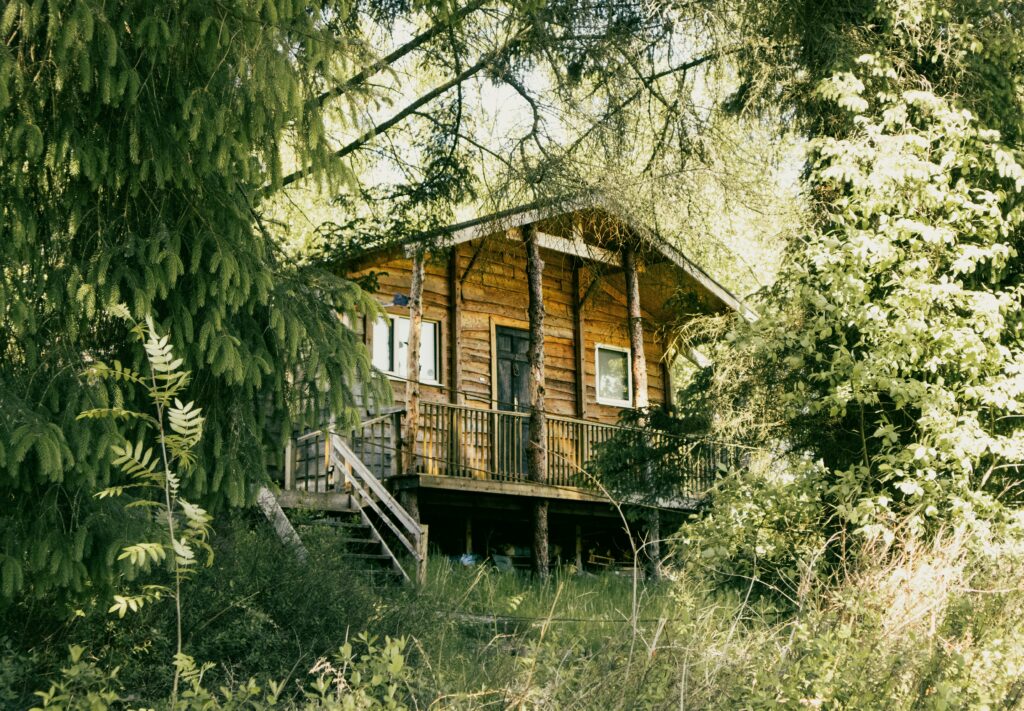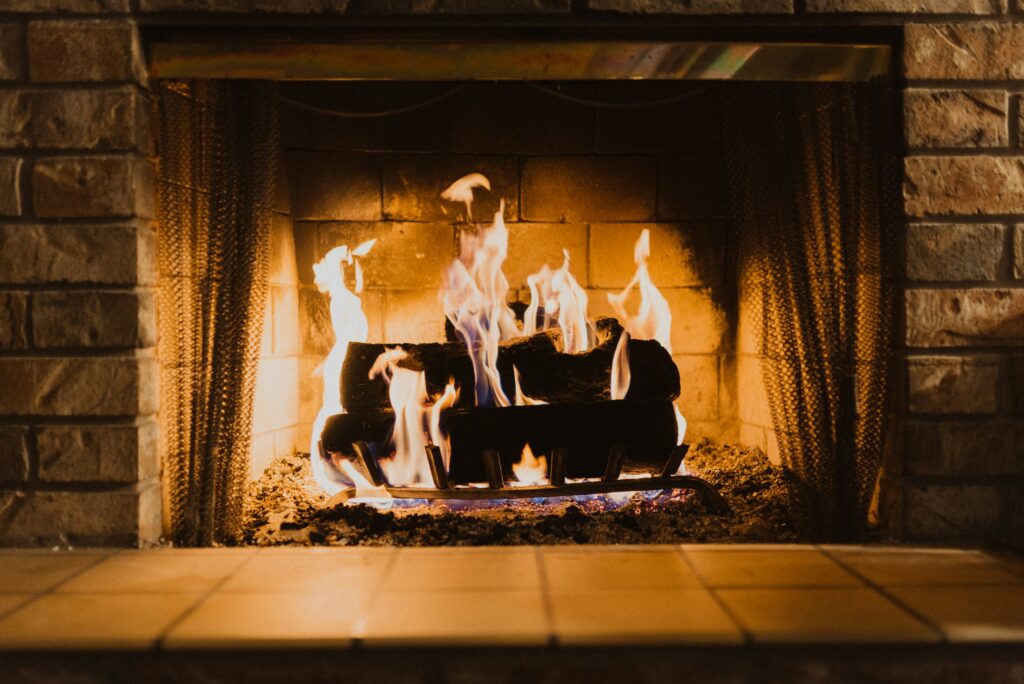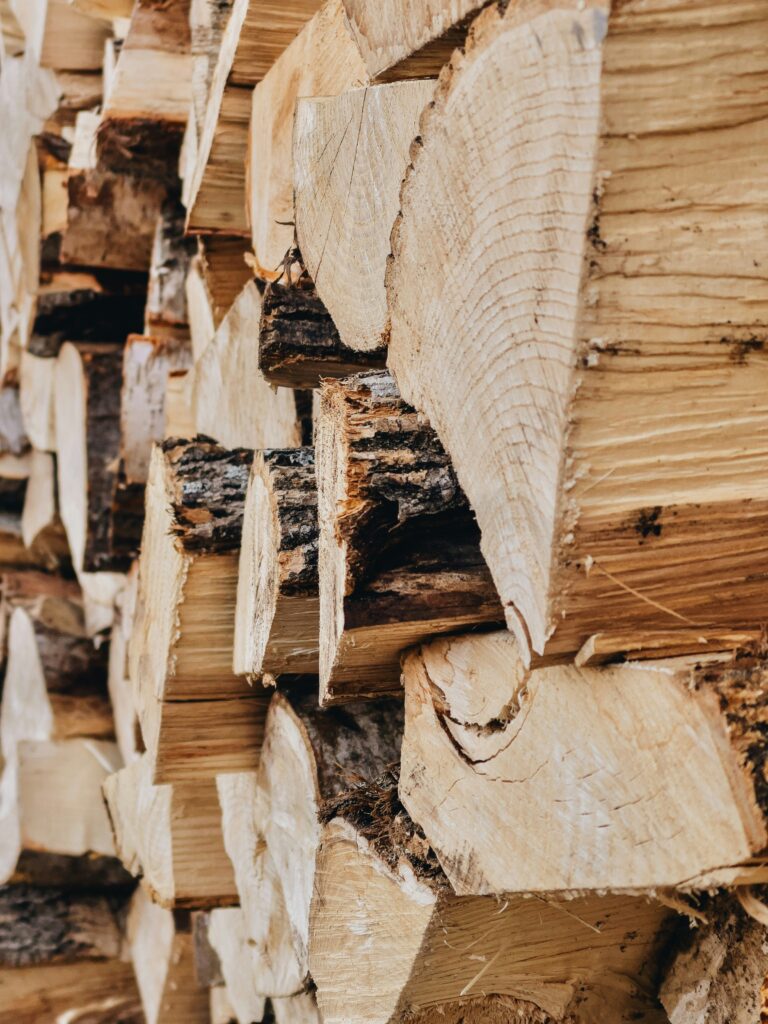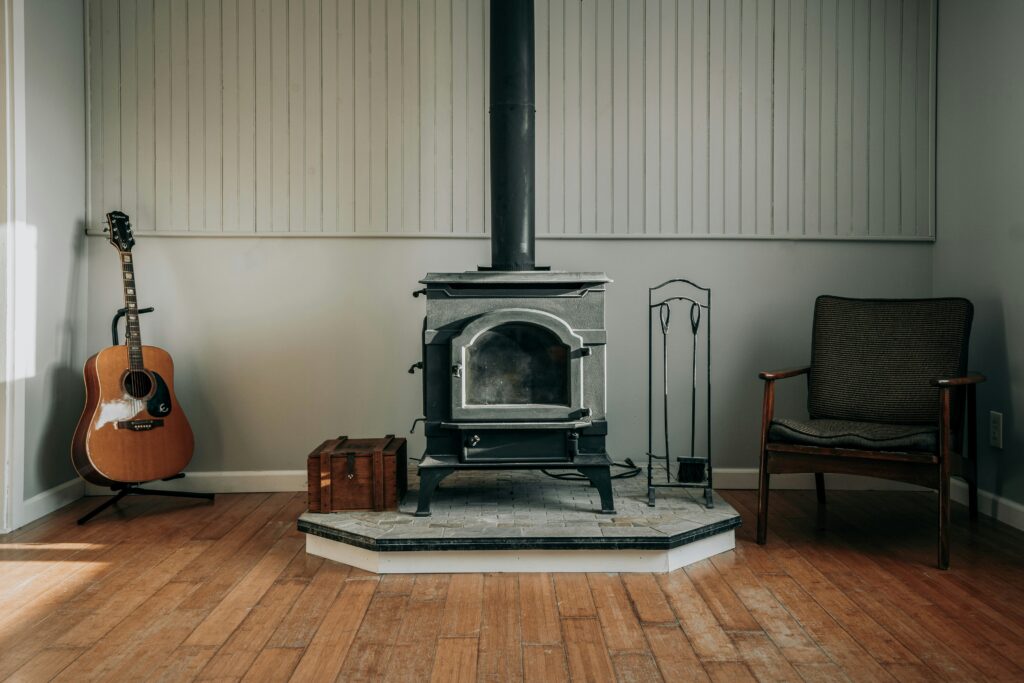
Heating Your Home with Wood
Who hasn’t enjoyed the cozy winter warmth of a crackling wood fire? Heating with wood makes use of an affordable, local, renewable, and sustainable resource. Unlike heating with fossil fuels where much of your fuel bill leaves the state, locally sourced wood keeps more money in our communities.
By Denise Thornton

Who hasn’t enjoyed the cozy winter warmth of a crackling wood fire? Heating with wood makes use of an affordable, local, renewable, and sustainable resource. Unlike heating with fossil fuels where much of your fuel bill leaves the state, locally sourced wood keeps more money in our communities.
And Wisconsin has wood to burn. According to the USDA Forest Service 2019 Forest Inventory, Wisconsin has about 17 million acres of forest: white oak/red oak/hickory being the most common forest type.
According to Scott Sanford, Emeritus Distinguished Outreach Specialist, University of Wisconsin-Madison, who specializes in rural energy issues, heating with wood is considered carbon neutral, as long as the trees aren’t being harvested faster than they’re growing. “There is some energy required to harvest wood, but it is pretty small compared to the energy you get out of it,” he says.
On the other hand, compounds in wood smoke can be carcinogenic and can contribute to heart disease, lung disease and asthma, says Zoe Chafe, lead author on a 2014 World Health Organization report on the health impacts of wood heat. The EPA offers a number of links to learn more.
Though smoke from burning wood (like other fuels) does pollute and affect the environment and human health, if you choose the right wood and burn it the right way, you can gain its benefits while significantly offsetting the amount of pollution.
“Make sure your wood is dry,” says Sanford. “Wet wood is a waste. It should be less than 20 percent moisture.” Wood moisture meters are available online or at hardware stores for $15 to $30. Learn more about testing your wood with a moisture meter.
Burning adequately dry wood:
– Makes fires easier to start and burn hot. Check out four easy steps to dry firewood here.
– Uses less wood to get the same heat
– Reduces creosote build-up and decreases the chance of a chimney fire. Check these tips to avoid chimney fires.

To dry out wood, Sanford suggests, “Softer wood, such as pine or a less dense deciduous tree, should dry adequately in 12 months. Hard wood, like oak or locust, needs two years to dry after it is split.” For ideal drying, he suggests split pieces of hard wood should be no more than six inches in any direction. “Every piece you are going to burn needs to be split at least once, even if it is just a few inches in diameter. Bark on the logs will hold moisture and prevent the wood from drying out,” he adds.
How much wood and the size put into a firebox will also affect how efficiently it will burn. “If you put in a large amount of wood, and heating demand is low, the furnace or boiler air supply will be reduced to prevent overheating and then the fire will smolder and create smoke. Smoke is unburnt wood and reduces the efficiency of the heating device. That’s why its recommended to put in just the amount of wood needed to provide heat without excessive smoke,” Sanford explains. “You need to spoon feed the wood, for a more efficient, uniform heat.”
The Environmental Protection Agency (EPA) offers information on choosing the right wood-burning appliance for your needs.
TYPES OF WOOD-BURNING APPLIANCES
Fireplaces are primarily for ambiance and not considered a good way to heat a space. According to the EPA, a wood-burning fireplace is a very inefficient way to heat your home. Fireplace drafts can pull the warm air up the chimney, causing other rooms to be cooler. If you use central heat while burning in a fireplace, your heater will work harder to maintain constant temperatures throughout the house. Also, fireplaces do not burn as cleanly as EPA-certified wood heaters, creating 20 times the amount of air pollution. “If you are using a fireplace,” says Sanford, “you are better off just adding a few pieces at a time as it burns.” A typical fireplace without airtight sealed doors is at best 10% efficient according to Sanford.

Wood stoves are usually made of cast iron or steel, and older models are usually not very efficient. The EPA offers information on how to tell if your wood stove has been certified They also offer information on how to choose the right wood stove.
Hydronic heaters (also called wood boilers) burn wood and are usually located outdoors. New units are very efficient, but older ones are not. “One of the reasons older outdoor boilers were so inefficient is because you have a fire box surrounded by water, and water boils at 212 degrees F. You need 2,000 degrees F to get complete combustion,” says Sanford. “Plus you need turbulence and enough air. If you have cold walls, you will not get a high enough temperature throughout the firebox to get complete combustion.
The newer stoves have a combustion chamber separate from the heat exchanger. The hot combusted air is run through a heat exchanger to transfer the heat to water that then passes through the home heating system. Many of the older outdoor wood boilers were in the neighborhood of 40 percent efficient, whereas newer ones are about 85 percent efficient.”
Forced-Air furnaces burn cordwood, wood pellets or wood chips to heat an entire residence – usually from an indoor furnace. You can learn more from the EPA Certified Wood Heater Database.
Masonry heaters consist of a firebox, a large masonry mass, and a maze of heat exchange channels. It stores heat from the fire in its thermal mass, then slowly releases the heat. The Masonry Heater Association of North America has more information.
If you are considering adding or replacing a wood-burning heat source, the U.S. Department of Energy recommends making sure it is properly sized for the space to be heated. Their rule of thumb is that a stove rated at 60,000 British Thermal Units (Btu) can heat a 2,000-square-foot home. (This value will depend on the region.)
TYPES OF WOOD TO BURN
The wood you use could be the tops of trees from a logging operation, says Sanford. Wood chips can also be burned effectively. Wood pellets can provide efficient heat. “The advantage of a pellet or wood chip stove is that you feed the wood in at the same rate it burns, which doesn’t happen with a cord-wood fire where you are putting chunks of wood on no matter how much heat you need.” Learn more about wood and pellet heating here.
To compare the costs of buying various types of wood, as well as other heating fuels, the UW-Extension has a website that demonstrates how to calculate your costs along with a cost comparison worksheet.

It is possible in some cases to get firewood for personal use from state and county parks. Anyone looking to do so, should contact the specific property to learn about its regulations and get a permit for that area.
It is safest to buy and burn locally cut firewood. And be aware that transporting as little as one piece of firewood can also transport tree problems like emerald ash borer , spongy moth, or oak wilt .
The time of year, and the outdoor temperature, can affect how efficient wood burning can be. “During the shoulder months,” says Sanford, “it may be better to use a back-up electric, oil, or gas furnace, because you only need to heat for an hour or so per day. A wood fire is going to spend more time smoldering after the heating need is met.”
“Some wood-fired hydronic systems also provide domestic hot water, and some people burn wood year round for that reason,” Sanford continues, “If you are getting the wood from your own land, some people think it’s free, but the last I checked, it takes a chain saw, gas and probably a pickup truck to move it around. Instead, you could consider taking that wood and selling it to pay for an efficient water heater.”
And don’t underestimate the value of the personal effort involved in heating with wood. “Wood has a way of heating multiple times,” Sanford concludes. “There is a lot of people power in the process. You expend calories and get great exercise, cutting and moving it, and moving it again. On average, people handle a piece of wood four or five times before it gets into the wood stove.”
